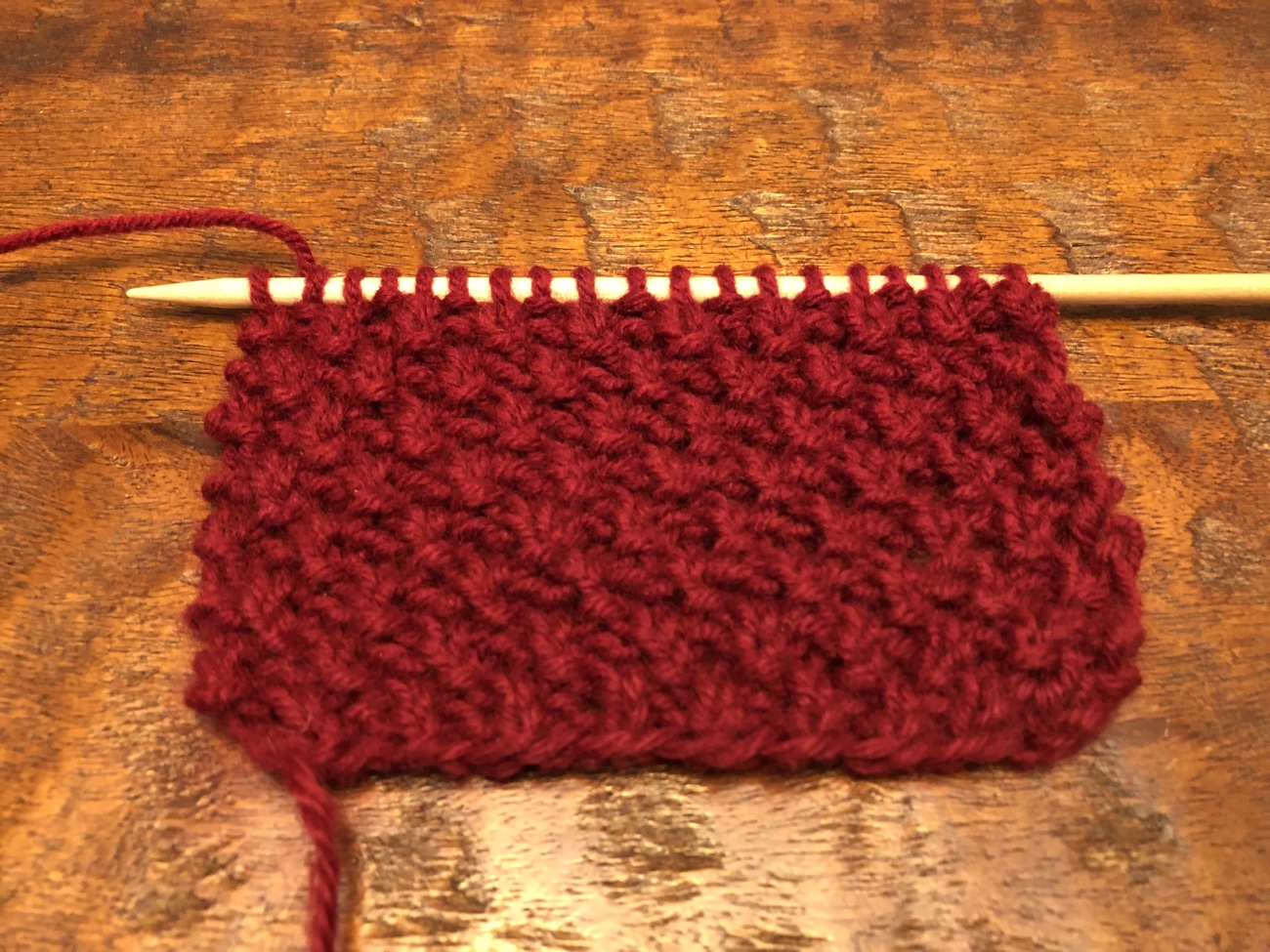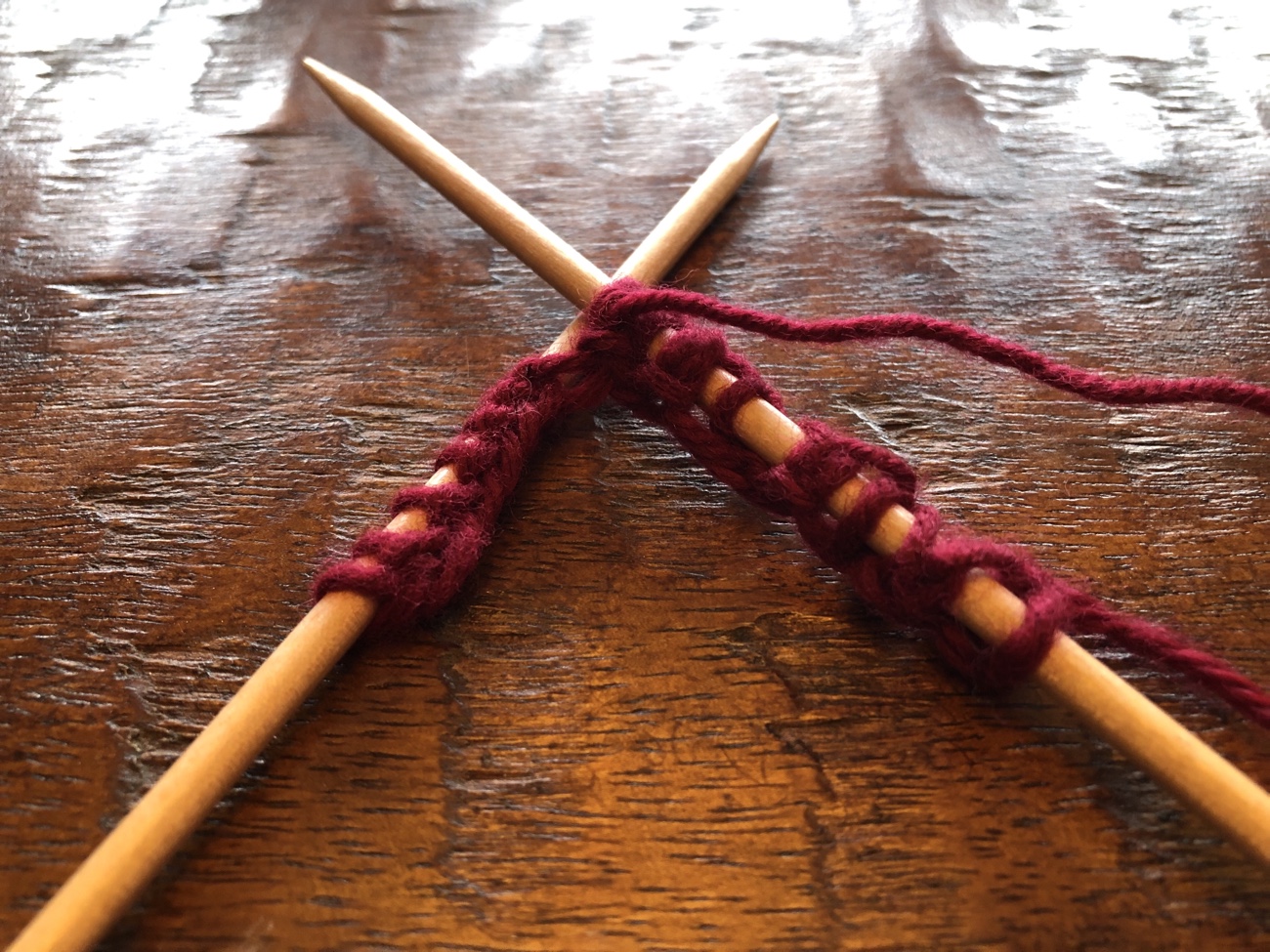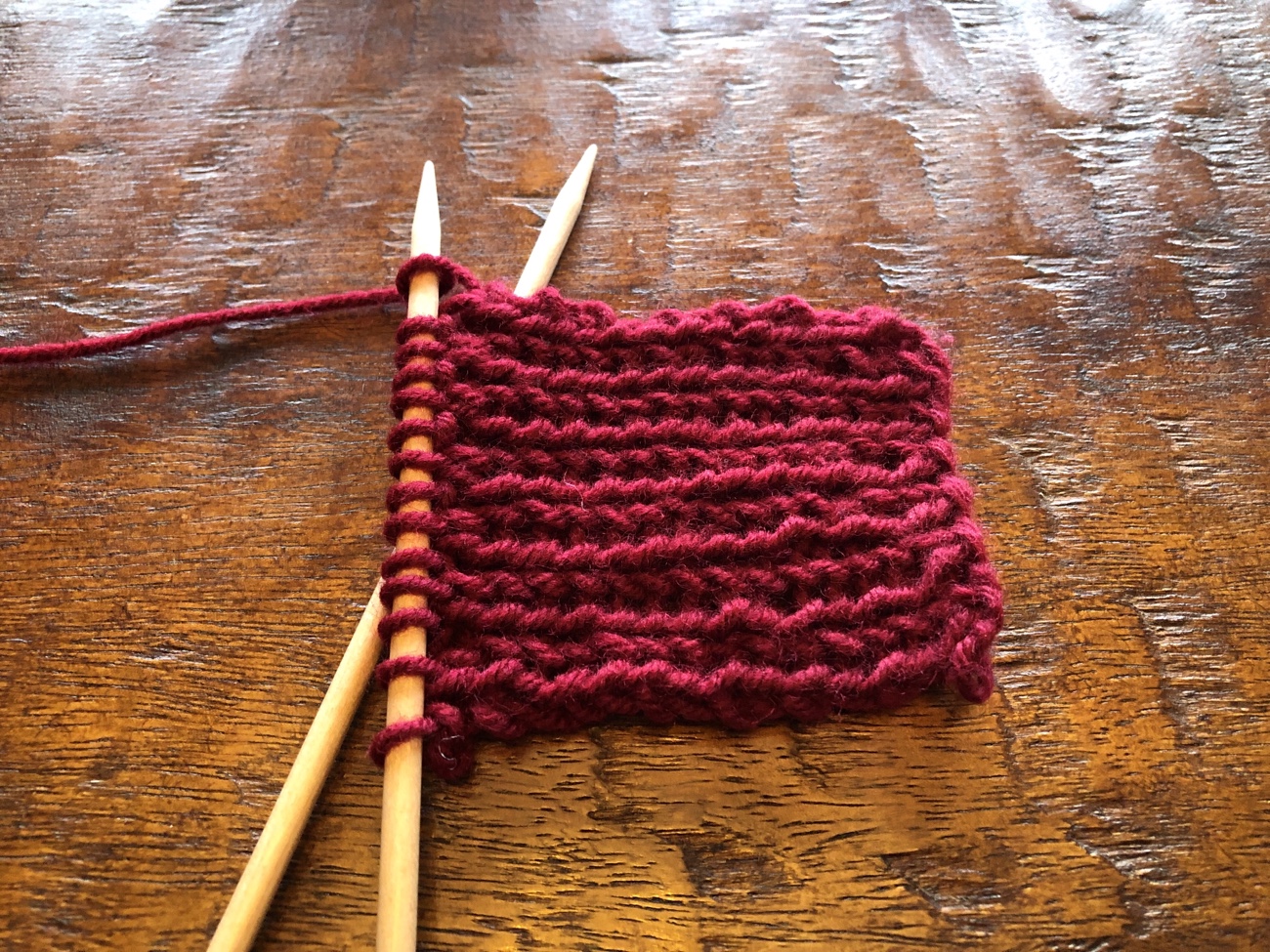
I continue to practice knitting on needles and find it very enjoyable. Especially exciting is a section in one of my books that provides directions for making different stitches – there are more than just garter and stockinette stitches! In learning new stitches, though, I encountered one that tested my patience.
I’ve been accused of lacking patience, but I think it’s a relatively recent development. As a kid, I sat for hours fishing for trout: sitting on the bank of a river or lake or in boat, I held my fishing pole still with the line across my fingers so I could feel the slightest tap of a fish nosing the bait on the end of my line. Despite my (usual) fishing prowess, some days I caught no fish at all. But I had patience.
As I grew older and entered the corporate world, patience wasn’t an asset. That world is often about doing multiple tasks at once (though studies suggest rethinking the value we place in multitasking), doing them quickly, and doing “more with less”. Yeah, right – a real “recipe for success”!
I’m relearning to focus on just one task or project at a time. Knitting has helped me do just that – I can’t really do anything else while trying to execute a new stitch; if I do, the result is just ugly. I miss stitches, there are holes, the pattern is inconsistent. The results are immediate and obvious. And it basically means starting over.
As I moved past garter, stockinette, and twisted stockinette (also having practiced both knitting and purling through the back loop), I arrived at seed stitch. It seemed easy enough, but required doing a knit stitch followed by a purl in the same row. No problem, right?
Wrong. I practiced this stitch pattern multiple times, and each time it was messed up beyond recovery. I could knit and purl rows like nobody’s business, but a knit stitch followed by a purl resulted in a hot mess of funky snarled stitches with no way to identify where to start the next row. Maybe the next time would be better…but it wasn’t. Same problem. There was much unraveling (and swearing).

Today, after having some fun doing swatches of purl (row 1) followed by purl through the back loop (row 2) as well as knit (row 1) followed by knit through the back loop (row 2) – neat patterns! – I decided to return to my nemesis, the rib stitch (really just k1, p1). WTH was the problem with this “easy” stitch??
I kept at it, unraveling and re-knitting, over and over. When I felt frustrated, I’d return to the stitches I knew and make a nice, affirming swatch. I knew I could do k1, p1…what was I missing?
Then, after about the tenth try, it happened. I was thinking about why the stitches looked so weirdly twisted and realized that the working yarn’s placement could be a factor. When you knit, the yarn goes behind, but it needs to go in front when you purl – so when you’re doing both in sequence, the working yarn needs to be moved into the proper position before each stitch. An epiphany!

Once I began moving the yarn before each stitch, they worked up beautifully. No more twists, and a recognizable pattern appeared. Such a simple solution to an intractable problem! It was almost embarrassing. But so it goes when you learn a new skill. And along with learning how to k1, p1 (1×1 rib knit), mastering that sequence will allow me to do other stitches now, like moss, double seed, nubby sand, and many more. I think of it as a graduation of sorts.
This experience just reinforced that there are always solutions – often, more than one – to problems. They may take some time to work out, though, so they’re lessons in patience, too. Perseverance!
